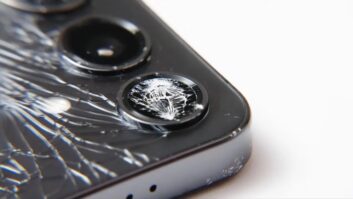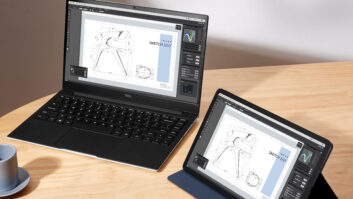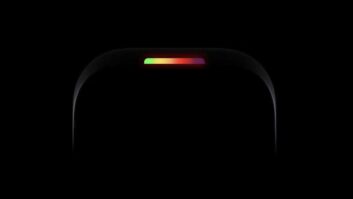U.S. smartphone unit sales in 2008 continued to grow — although at a slower rate — despite the economic downturn, but a host of converged devices could challenge the category’s resiliency in the future, analysts said.
The converged devices include mobile Internet devices (MIDs), ultramobile PCs (UMPCs) and netbooks, all of which feature Wi-Fi and, in some cases, 3G or 4G wireless-data connections.
Research company In-Stat defines MIDs as mobile handheld devices whose primary or major secondary function is full Internet access. That would include Nokia’s N810 Wi-Fi- equipped Internet tablet, the now-discontinued Wi-Fi/WiMAX version of the N810 and the Apple iPhone. In-Stat defines a UMPC as a mobile handheld device that accesses the full Internet but also functions as general-purpose computing device with a PC OS and incorporates a small “thumbable” keyboard, whereas a netbook such as the Asus Eee PC features a laptop-like form factor with larger keyboard and screen and touts full Internet access as its primary function. (See table below.)
Some analysts, Intel and Qualcomm define the market differently, using the term MID broadly to include UMPCs, netbooks and the products defined by In-Stat as MIDs. Some analysts’ definition of MIDs is even broader, embracing cellular-equipped personal navigation devices (PNDs), cellular- and Wi-Fi-equipped portable media players (PMPs) and cellular-equipped e-book readers.
Whatever you call them, In-Stat-defined MIDs designed primarily for Web browsing — excluding netbooks, UMPCs and Wi-Fi/cellular-equipped CE devices — will cut into smartphone demand if cellular voice technology is included, some analysts said. In a survey of more than 1,000 U.S. consumers, for example, ABI Research found that 47 percent “would use a MID as a replacement for their cellphone” if the MID included cellular voice, said analyst Philip Solis. “Thirty-four percent said they would use it in addition to their cellphone, and 19 percent were not sure.” He added, “This is going to become a question for MID vendors and consumers alike. There will be little difference between a smartphone such as the Palm Pre, which uses an OMAP 3 processor, and a MID with cellular voice, except for screen size.” MID screens would start at 4 inches in size, according to Solis’ definition. “Understanding of what consumers want from standalone MIDs without cellular voice will be important,” he said.
“Some people will value a separate device, with a bigger screen for the Web browsing, that they can choose when to carry,” ABI continued. “The more interesting promise offered by MIDs without cellular voice will be their repackaging in the form of specialized Internet-connected CE devices such as media players or personal navigation devices.”
As the selection of UMPCs with embedded cellular grows, UMPC competition with smartphones could likewise grow. In-Stat contended that “UMPCs will increasingly add support for wide-area wireless to supplement Wi-Fi” to eliminate “the frustration many users have with spotty coverage of Wi-Fi.”
Worldwide, about 20 percent of UMPCs feature cellular-data modems, but that will grow to almost 50 percent by 2012, In-Stat projected.
As for competition between smartphones and laptop-looking netbooks, research company Portelligent sees smartphones and netbooks occupying “adjacent niches,” but recent technology announcements “may further blur the lines between smartphones and netbooks in the coming year,” the company said. The announcements include lower-power netbook platforms from Intel, Nvidia and Qualcomm.
Netbooks and smartphones are already converging in terms of complexity and cost to manufacture, but the key issues that have kept smartphones and netbooks from competing head-to-head, at least for now, are size and power consumption, Portelligent said. Power-consumption differences, however, are shrinking. In netbooks, reductions in component counts, the use of smaller screens and the move to solid-state disk drives have improved netbook power consumption by more than 65 percent over previous generations of notebook PCs, the company said. Nonetheless, netbooks still consume 10 times more power than smartphones to accomplish the same task, the company added.
Should power-consumption differences diminish, however, size differences could continue to keep netbooks and smartphones in adjacent niches, Portelligent said. “Netbook PCs demonstrate a 50 percent smaller footprint than full-size notebooks,” the company said. “Further reductions in size would impose sacrifices in the usability of the keyboard and a cramped display — two key differentiators from smartphones.” Likewise, smartphones aren’t likely to go up in size to match netbook sizes. “Consumers expect to be able to place a phone handset unobtrusively in a pocket,” Portelligent said. “At 6cm by 12cm, the Apple iPhone and the HTC Google Phone push the upper limit on acceptable cellphone size.”
For its part, Forrester Research sees some overlap in the smartphone and netbook markets. A Forrester survey of U.S. consumers found that 52 percent believe cellphone screens are too small for data activities other than messaging. That leaves 48 percent who believe smartphone screens are adequate for more intensive data applications, such as Web browsing, typing long emails and using Web-based applications. For the majority of consumers, however, “netbooks represent a logical device that’s ‘in between’ a PC and mobile phone.” For these consumers, netbooks will complement desktop and laptop computers in the household, either as junior PCs for the kids or as devices meant to be used outside the home, whereas larger laptops are meant to be moved within the home, Forrester said.
As smartphone alternatives, netbooks, UMPCs and In-Stat-defined MIDs would become more compelling if carriers subsidize the prices of models sold with embedded cellular-data modems, and the move has already begun in the U.S. In-Stat analyst Ian Lao said carrier-subsidized netbooks are common in Asia and Western Europe and have begun to appear in the U.S., where carrier AT&T is subsidizing a $100 Asus netbook with embedded high speed packet access (HSPA) technology through RadioShack stores and a $100 Dell Inspiron Mini 9.
Despite the potential for competition, smartphone sales will double their share of cellphone unit sales worldwide to 20 percent by 2013, In-Stat said.
What’s In A Converged Name?
IN-STAT DEFINITIONS













